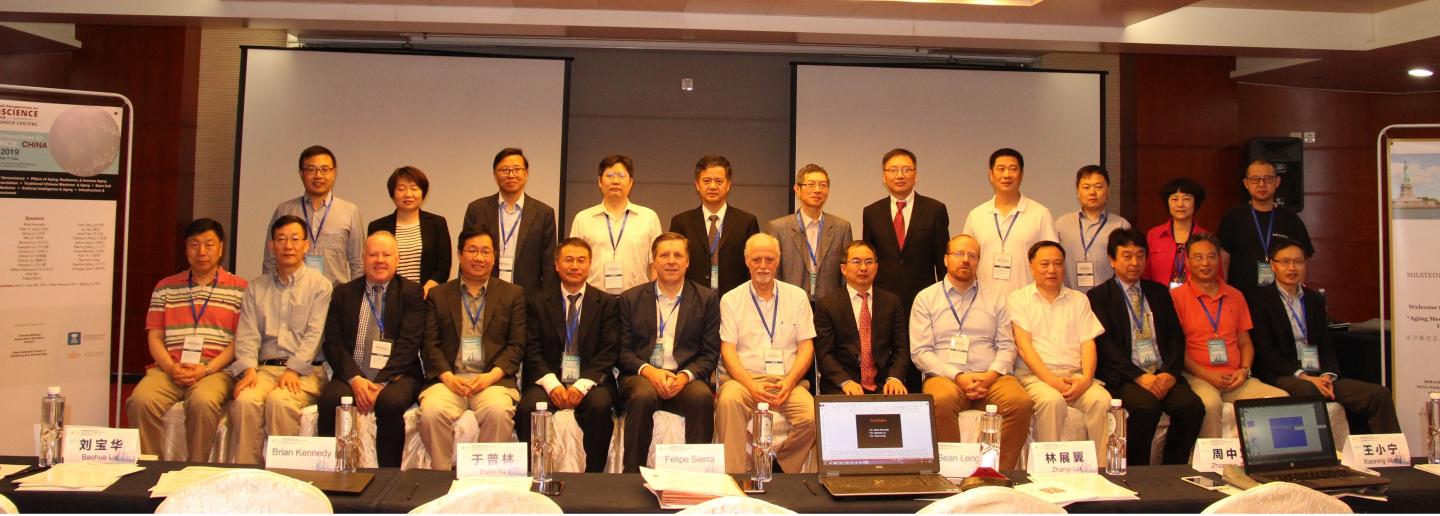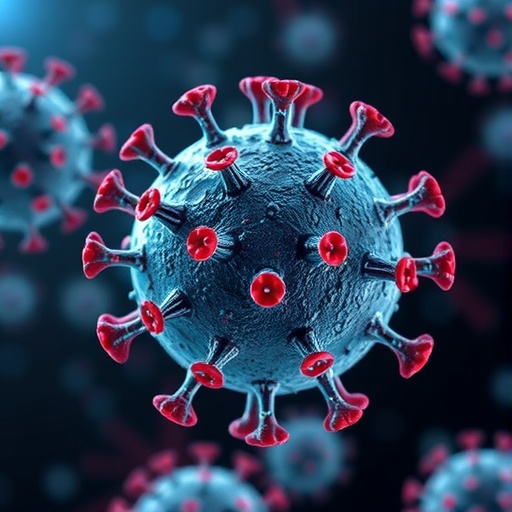First in series, ‘Aging Mechanisms and Interventions that Impact Senior Health’, organized by the Nathan Shock Centers of Excellence in the Basic Biology of Aging and Milstein Medical Asian American Partnership (MMAAP) Foundation

Credit: Milstein Medical Asian American Partnership Foundation
July 18, 2019 (New York, NY) – The first in a series of international meetings bringing together researchers from around the world to advance the revolutionary approach to healthy aging known as geroscience was held recently in China–the country with the world’s largest aging population. Geroscience, an important research field which is enhancing our understanding of the molecular and cellular underpinnings of the biology of aging that drive most chronic diseases in older adults, continues to gain momentum.
Held in conjunction with the annual scientific meeting of the China Medical Association Geriatrics Branch on May 24-25 in Shenzhen, China, the meeting featured more than 40 experts from China, other Southeast Asian and European countries, as well as the United States. They shared insights about basic, translational, and clinical aging research and discussed how to integrate geroscience concepts into global research endeavors to accelerate both prevention and intervention strategies. They also discussed ways to build the infrastructure and platform needed to advance the field of geroscience.
The China geroscience meeting was co-organized by Milstein Medical Asian American Partnership (MMAAP) Foundation, the Nathan Shock Centers of Excellence in the Basic Biology of Aging, and the American Federation for Aging Research (AFAR).
Sean X. Leng, MD, PhD, the leading convener and co-Chair of the meeting, Professor of Medicine at Johns Hopkins University and President of MMAAP Foundation, shares that “the expert presenters discussed core principles in geroscience as well as perspectives unique to Eastern medicine and innovations, including pillars of aging and resilience, traditional Chinese medicine, stem cell and regenerative medicine, artificial intelligence, anti-aging research and translation, as well as geroscience infrastructure and platform building. The meeting provided a truly unique and important international platform for promoting geroscience and brainstorming on its further development in China and around the world.”
Watch: https:/
Recording: Howard P. Milstein, Chairman of MMAAP Foundation, welcomes guests to the meeting at the opening of the meeting.
Howard P. Milstein, Chairman of MMAAP Foundation, says the decision to hold the first international meeting in China was significant. “Meeting in China–home to more older adults than any other nation on our planet–sends a powerful message to the global research community. It also fosters our Foundation’s primary mission: to improve world health by developing mutually beneficial partnerships between the United States and China, as well as greater Asia.”
Organizers plan to publish proceedings from the meeting in Aging Medicine, the official journal of the Chinese Society of Geriatrics and the only English-language aging journal in China.
A second International Perspectives on Geroscience meeting was held in San Francisco from May 29-30. Future international meetings are scheduled later this year for Sydney, Australia, August 26-28; Rehovot, Israel, September 4-5; Madrid, Spain, September 13-14; Singapore, September 25-26; and Puerto Varas, Chile, November 18-21.
“By organizing the seven international meetings around the world, the Nathan Shock Centers are taking a leadership role in not only enhancing understanding of geroscience concepts throughout the global research community, but planting the seeds for exciting future collaborations that bridge disciplines and geographical boundaries,” says AFAR Executive Director Stephanie Lederman, EdD.
For more information, visit the Nathan Shock Centers’ International Perspectives on Geroscience Meetings page: https:/
###
About the Nathan Shock Centers of Excellence in the Basic Biology of Aging. The Nathan Shock Centers of Excellence in the Basic Biology of Aging initiative provides leadership in the pursuit of basic research into the biology of aging. The Division of Aging Biology (DAB) of the National Institute on Aging funds the Nathan Shock Centers of Excellence in the Basic Biology of Aging across the U.S. The Centers provide leadership in the pursuit of basic research into the biology of aging. They do so through a Research Development Core, which administers small start-up funds locally and organizes national annual meetings to highlight specific areas of research. In addition, each Nathan Shock Center has several specialized cores that provide services to Shock Center members, as well as for-fee services to the community at large. The cores are different in each Center, depending on the strengths of each Institution. Learn more at http://www.
About Milstein Medical Asian American Partnership Foundation. Under the vision and leadership of Howard P. Milstein, Founder and Chairman, Milstein Medical Asian American Partnership (MMAAP) Foundation was founded in 2011 to improve world health by developing mutually beneficial partnerships between the US and China, as well as greater Asia. Working with some of the premier health organizations in the world, MMAAP Foundation’s priority is to bring together and fund exchanges among the best medical talents and institutions in the regions. For more than 50 years, the Milstein family has been actively involved in health and medical-related philanthropy. MMAAP Foundation builds upon this distinguished history in areas that include geriatric medicine (under Irma and Paul Milstein Program for Senior Health), dermatology, reproductive medicine (IVF), translational medicine, and stem cell research and regenerative medicine. MMAAP Foundation works in close collaboration with other medical organizations supported by the Milstein family, including American Skin Association, the Milstein Melanoma Research Program at the Rockefeller University, and the Program for Translational Chemical Biology at New York-Presbyterian Hospital/Weill Cornell Medical Center.
In 2018, MMAAP Foundation successfully registered its China Representative Office in Beijing. The Foundation is one of the few non-government organizations (NGOs) that have obtained an official presence in China. This strengthens its philanthropic efforts in China and further promotes scholarly exchanges and a bilateral relationship between China and the US. MMAAP Foundation is 501(c)(3) non-profit organization. For more information, please visit our bilingual website (English and Chinese/Mandarin) at http://www.
About the Chinese Medical Association Geriatrics Branch. China Medical Association (CMA) Geriatrics Branch is the largest interdisciplinary geriatrics professional organization with longest history in China. It focuses on clinic practice, education and research of Geriatrics, as well as disseminating knowledge to the geriatric professionals and the public and advocating geriatrics to policy makers. Our mission is to address challenges of population aging and promote healthy aging.
About AFAR. The American Federation for Aging Research (AFAR) is a national non-profit organization that supports and advances pioneering biomedical research that is revolutionizing how we live healthier and longer. For nearly four decades, AFAR has served as the field’s talent incubator, providing more than $178 million to more than 4,100 investigators at premier research institutions nationwide. A trusted leader and strategist, AFAR also works with public and private funders to steer high quality grant programs and interdisciplinary research networks.
AFAR-funded researchers are finding that modifying basic cellular processes can delay–or even prevent–many chronic diseases, often at the same time. They are discovering that it is never too late–or too early–to improve health. This groundbreaking science is paving the way for innovative new therapies that promise to improve and extend our quality of life–at any age. Learn more at http://www.
Media Contact
John Chaich
[email protected]
Original Source
http://www.




